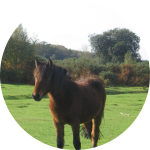| Home |
Welcome to the Horse Stall |
|
Horse Stall contains all types of information for Horse Lovers.
There are a number of products branded horse gifts and products.
Horse Articles :: Horse Breeds Glossary - P Continued
|
Horse Breeds Glossary - P Continued |
|
PASO FINO HORSE In Spain, the mixing of breeds resulted in one of the world's favorite riding horses. The Barb breed, horses known for their strong genetics and impact on horse development throughout North Africa, the New World and Europe, was interbreeded with the delicate Spanish Jennet and the Andalusian breed, during the Moorish conquest of Spain. As Columbus journeyed into the New World for the second time, he brought along with him horses into Santo Domingo (currently known as the Dominican Republic). The horses were the mix of Barb, Jennet and Andalusian. As isolation occurred, these mixed breed horses became the Paso Fino ancestors. The best of the contributing breeds became most prominent in the isolated horses, and offspring would have the hardiness of the Barb breed, and the natural and beautiful presence of Andalusian, while maintaining the smooth gait known to Jennet horses. The Paso Fino horses are known for this genetic stamp gait, and even though they've undergone various physical changes from breeding and environment, the gait is what will identify the horse as a Paso Fino. When a Paso Fino horse moves, the feet fall in a lateral pattern instead of the typical diagonal pattern. Instead of trotting that causes the familiar seat bounce that riders know all too well, the Paso Fino's speed is called a corto, which is smooth and eliminates the uncomfortable bouncing. The horses walk, canter and have gaits of several speeds, known as the paso fino, paso corto and paso largo- in order of speed. Paso Fino horses do not need to be trained on the various walks, but rather they know them from birth. Some Paso Fino horses are more athletic than others, and these are horses that are typically found in the show rings, competing in classes in front of quiet audiences. Paso Fino's are placed on boards so that when each of tehir hooves strike the board, the rhythm and quickness is measured by judges. Champions generate rapid and staccato rhythms. Paso Fino horses are between 13 and 15.2 hands in size, with colors that range from chestnut to bay to palomino, black, roan, and pinto. They are spirited, yet intelligent and gentle. Paso Fino's are well versed and can ride both English and Western styles. PERCHERON HORSE No one really knows the exact origins of the Perheron horse. Many people believe the Percheron is a breed that descended from the original horses that were found during the Ice Age, while others believe the Percheron is related to the Boulonnais horse that was used in the Roman invasion of Brittany. Some people believe that Percheron is from Arab stallions or from the horses used when invading Moors during the battle of Poitiers. Whatever the exact history of Percheron horses, they were mated with Arab stallions during the eigth century and during the Middle Ages. During the crusades, the Percheron breed was recognized for their soundness and beauty. Percheron horses stood about 15 to 16 hands hgih in the 17th century, and were very much in demand for their ability to perform a variety of tasks. They were very active horses. In the 19th century, a stud was established by the French Government in order to develop the breed as mounts for the army. In 1839, Percherons were imported to the United States by Edward Harris of New Jersey. In the last half of the 19th century, thousands of Percherons were imported into America and continued to be imported until World War II. American farmers and freight workers loved Percheron, and the government census of 1930 showed that there were at least 3 times as many Percherons registered as four other draft horse breeds combined. After World War II, farm tractor inventions made Percheron's
less necessary, and the breed nearly became extinct. A few
farmers and Amish helped preserve the breed.
|
Top Horses |
|
| Top Horse Movies | |
Horse Resources |
|
Horse Health |
|
Horse Breeds |
|
More Horses |
|


| Copyright 2005-2021 DR Management All rights reserved |
Dog Gifts | Wildlife Gifts | Handmade Horse Gifts |
